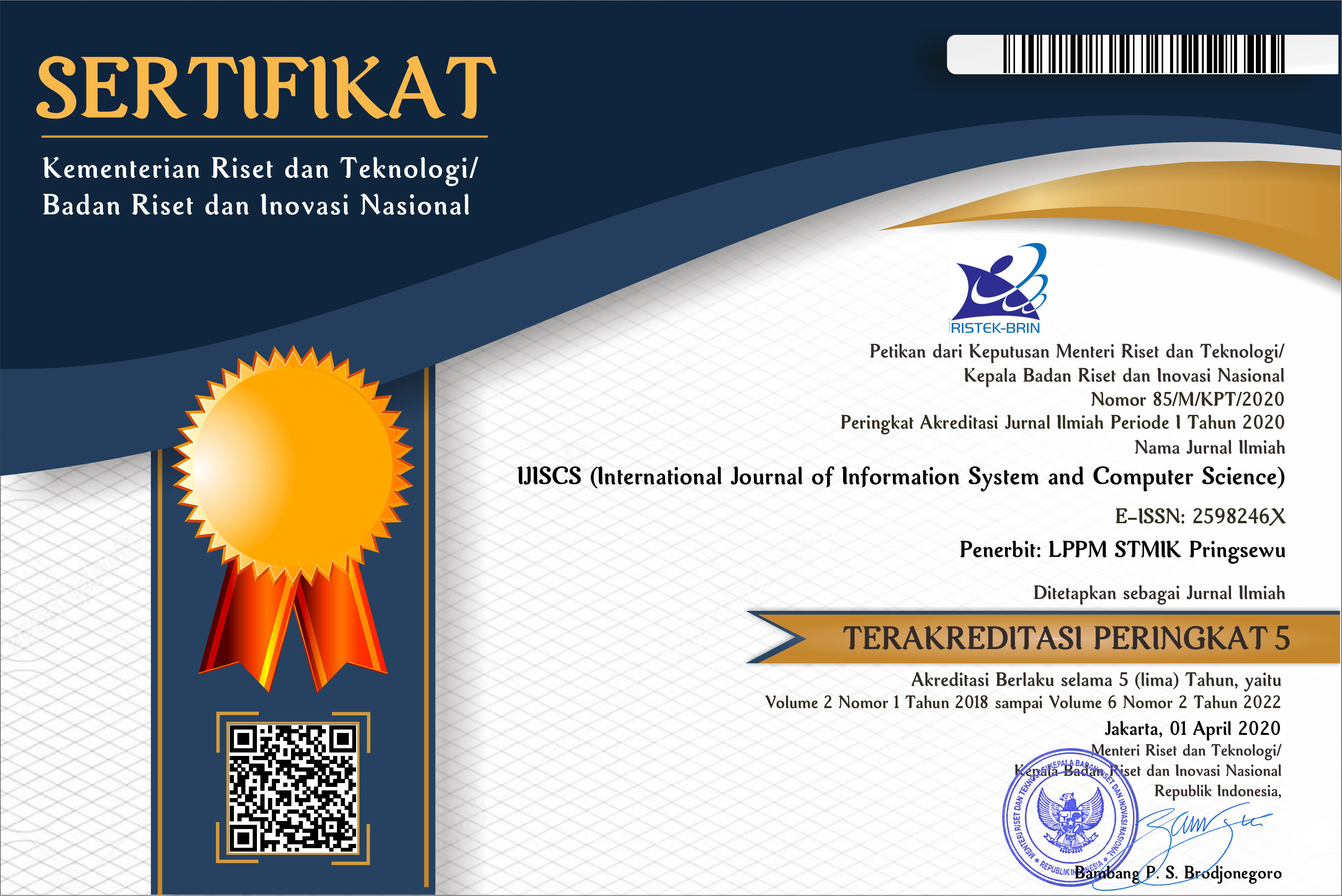DECISION SUPPORT SYSTEM DETERMINATION OF CUSTOMER SATISFACTION LEVEL OF ORIFLAME PRODUCTS WITH ANALYTIC HIERARCHY PROCESS METHOD
(1) Department of Information Systems, STMIK Pringsewu, Lampung
(2) Department of Information Systems, STMIK Pringsewu, Lampung
(3) Department of Information Systems, STMIK Pringsewu, Lampung
 Corresponding Author
Corresponding Author
Abstract
In order to improve customer satisfaction with Oriflame products, customer satisfaction was studied. Find out how Oriflame can satisfy customers through its products, services, finances, delivery, and company conditions. In this research, information marketing research is needed to understand how customers behave and the criteria that are very important when deciding how customers make decisions about Oriflame products. At this stage of research, researchers analyze existing systems by conducting library research and direct observation. In order to calculate the customer satisfaction level, the AHP (Analytic Hierarchy Process) method is used. By using this decision support system, it is expected to make it easier for companies and sellers to determine customer satisfaction with Oriflame products.
Keywords
References
L. S. Simanjuntak, J. R. Sagala, dan A. Gea, “Implementasi Sistem Pendukung Keputusan Dengan Metode Ahp Dalam Menentukan Tingkat Kepuasan Pelanggan ( Studikasus : Dinas Koperasi , Usaha Kecil Dan Menengah Kabupaten Deli Serdang ),” J. Method., vol. 4, no. 1, hal. 20–26, 2018.
A. Prakoso dan N. Negoro, “Analisa Strategi Pemasaran Produk Kosmetik Wardah Dengan Pendekan SWOT-AHP (Analytic Hierarchy Process),” J. Sains dan Seni ITS, vol. 6, no. 1, hal. 62–67, 2017.
E. Turban, R. Sharda, dan D. Delen, Decision Support and Business Intelligence Systems. Chapter 6 Artificial Neural Networks for Data Mining, vol. 8th. 2007.
E. Turban, J. E. Aronson, dan T.-P. Liang, Decision Support Systems and Intelligent Systems, 7th ed. Prentice Hall, 2004.
E. Turban, J. E. Aronson, dan T.-P. Liang, “Decision Support Systems and Intelligent Systems,” Decis. Support Syst. Intell. Syst., vol. 7, hal. 867, 2007.
T. L. Saaty, The Analytic Hierarchy Process. 1980.
R. Malinda, “Strategi Membangun Brand Image Pada Produk Handphone OPPO,” J. Aktual STIE Trisna Negara, vol. 16, no. 2, hal. 74–81, 2018.
F. T. Yanto Chandra, Simon Teasdale, “Social Entrepreneurship Research in the Greater China Region: A Scoping Review and New Research Framework,” J. Asian Public Policy, vol. 14, no. 2, hal. 1–43, 2020.
S. M. Muhamad Muslihudin, Fauzi, Satria Abadi, Trisnawati, Implementasi Konsep Decision Support System & Fuzzy Multiple Attribute Decision Making (Fmadm). Bandung: Penerbit Adab, 2021.
S. Kusumadewi, S. Hartati, A. Harjoko, dan R. Wardoyo, Fuzzy Multi-Attribute Decision Making (Fuzzy MADM). Yogyakarta: Graha Ilmu, 2006.
M. M. Keshtkar, “Performance analysis of a counter flow wet cooling tower and selection of optimum operative condition by MCDM-TOPSIS method,” Appl. Therm. Eng., vol. 114, 2017.
M. M. Andino Maseleno, K. Shankar, Miftachul Huda, Marini Othman, Prayugo Khoir, “CEL : Citizen Economic Level using SAW,” in Expert Systems in Finance: Smart Financial Applications in Big Data Environments, no. February, 2019, hal. 97–111.
Kusrini, Konsep dan Aplikasi Sistem Pendukung Keputusan, Ed. 1. Yogyakarta: Penerbit Andi Yogyakarta, 2007.
Article Metrics
Abstract View : 188 times
: 188 times Download : 54 times
Download : 54 times
DOI: 10.56327/ijiscs.v5i3.1075
Refbacks
- There are currently no refbacks.






